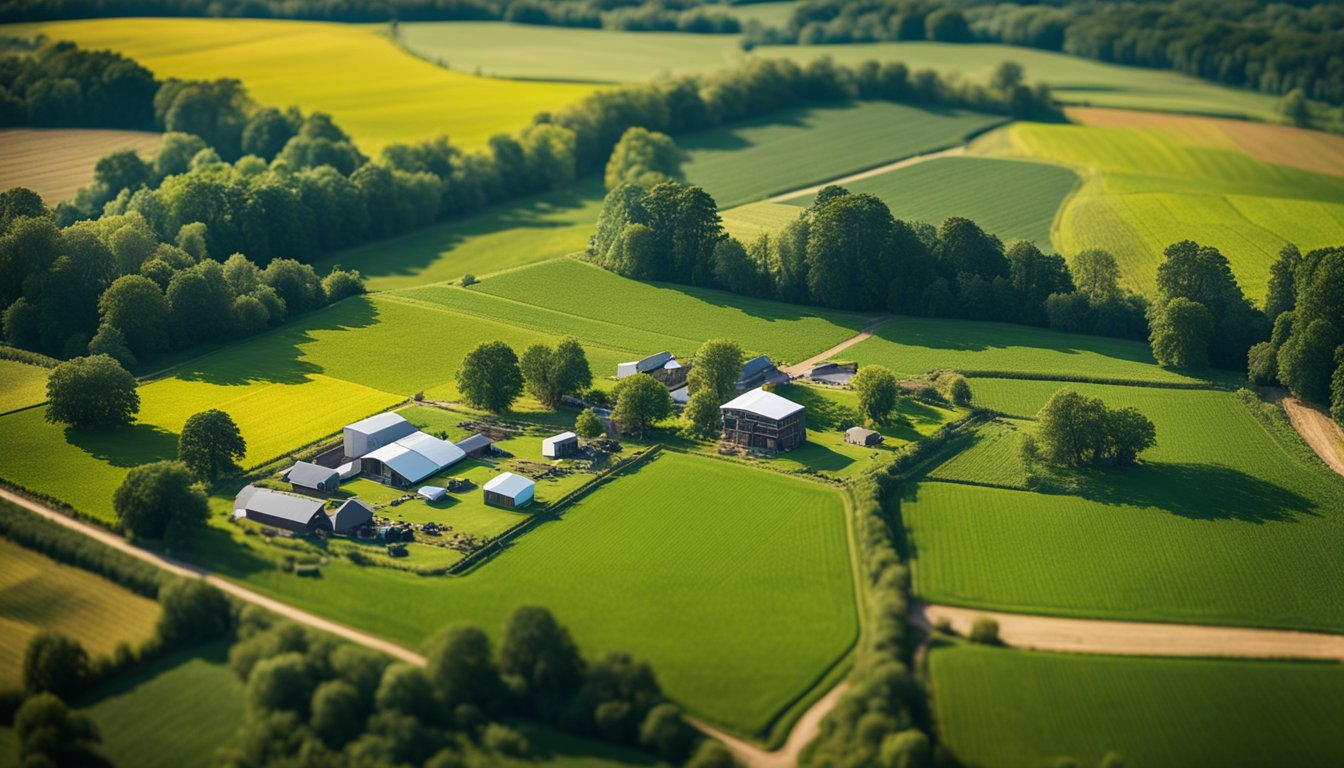Late updated: 19 Dec 2024 09:12
Written by: Oliver Bennett
Innovative IoT Solutions For Rural UK Connectivity: Enhancing Digital Access
The opportunity to bridge the digital divide in rural UK communities has never been more promising, thanks to the rapid advancement of innovative IoT solutions. IoT technologies are poised to transform connectivity, bringing high-speed internet to areas that have long been underserved. By enhancing agricultural practices and supporting local businesses, these innovations hold the potential to revitalise rural regions and foster greater economic growth.

Connectivity remains a critical challenge in rural communities, where traditional methods fall short both in speed and reliability. The integration of 5G networks and IoT applications can bolster these regions by offering more than just connectivity; they empower local economies by driving efficiency and new possibilities. This article delves into how such solutions are specifically tailored to meet the unique demands of rural environments, paving the way for renewed engagement and development.
Our exploration will cover key advancements and applications, including how IoT drives innovation in agriculture and rural industries, as well as addressing common questions surrounding these technologies. These insights aim to provide a comprehensive overview, drawing on the latest developments to inform and intrigue our readers.
Key Takeaways
- IoT helps bridge the digital divide in rural UK communities.
- 5G and IoT enhance connectivity and local economy support.
- Innovative solutions target unique rural connectivity challenges.
Challenges and Opportunities in Rural Connectivity
Improving connectivity in rural areas involves overcoming existing barriers while leveraging innovative technologies. Key challenges include addressing the digital divide and economic constraints. Opportunities arise through technological advancements that enhance connectivity.
Overcoming the Digital Divide and Economic Challenges
The digital divide remains a significant barrier to connectivity in rural regions. Many of these areas lack access to reliable digital infrastructure, leading to limited network availability and high-speed internet access. Economic challenges further exacerbate this problem, as the cost of deploying infrastructure can be prohibitive.
The UK government has launched initiatives such as Project Gigabit and the Shared Rural Network to tackle these issues. These programmes aim to expand high-speed broadband coverage and improve digital inclusion. Levelling up efforts are also underway to stimulate economic growth by enhancing rural connectivity. Our focus should be on developing sustainable solutions that address both the economic and digital aspects of this challenge.
Technological Innovations in Connectivity
Emerging technologies provide new ways to improve rural connectivity. The deployment of 5G networks offers promise for high-speed internet and reduced latency in remote areas. Additionally, satellite-based solutions and non-terrestrial networks (NTNs) play a crucial role in reaching isolated communities.
A multi-connectivity approach, such as TN-NTN, could significantly enhance network performance by combining terrestrial and non-terrestrial technologies for optimal coverage. The Rural Connectivity Accelerator supports these initiatives, fostering innovation in connectivity solutions. By integrating technologies like 5G cellular networks and satellite systems, we can bridge the digital gap and reinforce economic development in rural areas. These innovations promise substantial improvements in digital connectivity for our rural communities.
IoT Applications in Agriculture and Rural Development

In recent years, the integration of IoT has significantly transformed agriculture and rural life by enhancing efficiency and connectivity. Through smart farming, improved public services, and environmental management, IoT plays a vital role in sustainable rural development.
Smart Farming and Precision Agriculture
The agricultural sector is increasingly adopting IoT technologies to optimise farming practices. Smart farming involves using sensors and data analytics to monitor crop conditions and improve yields. Precision agriculture employs machine learning and other software to apply resources precisely where needed, enhancing productivity and sustainability.
By collecting experimental data from sensors, farmers gain insights into soil moisture, weather conditions, and early pest detection. This data-driven approach allows for better decision-making and contributes to sustainable farming practices. Technologies like LoRaWAN and satellite connectivity ensure reliable communication even in remote areas.
Enhancing Rural Life and Services
IoT applications extend beyond agriculture, also benefiting rural communities by enhancing living conditions and services. The digitalisation of rural services like telemedicine and rural tourism empowers local businesses and communities through better connectivity.
Network availability facilitated by non-terrestrial networks and satellite coverage helps overcome traditional barriers of terrestrial network infrastructure. We see improved access to healthcare and educational services, fostering sustainable rural development. Such advancements not only support local economies but also ensure community well-being through reliable communication channels.
Integration of IoT for Environmental Management
Environmental management is another critical area where IoT applications are influential. By employing IoT devices in forest management and microclimate monitoring, rural areas can better manage natural resources, contributing to environmental conservation.
Sensors enable real-time tracking of environmental changes, promoting proactive strategies. For instance, satellite networks provide essential data for remote operational support, ensuring robust environmental management despite existing infrastructure challenges. These insights lead to more informed decisions, aligning with key performance indicators for sustainable rural development.
Frequently Asked Questions

In this section, we address key topics such as obstacles to IoT connectivity in rural UK, the influence of IoT on agriculture, and the effect of governmental policies. We also explore economic impacts, strategies for IoT sustainability, and how these developments align with broader goals for rural advancement and digital inclusivity.
What are the primary challenges in delivering IoT connectivity to rural areas in the UK?
Rural UK faces geographical and infrastructural hurdles which impede IoT deployment. Sparse populations and rugged terrains make network installation costly. Limited backhaul options often delay progress, while ensuring seamless connectivity between devices remains a challenge. Finding sustainable power solutions can also hinder advancements.
How can IoT technology contribute to the advancement of agriculture in remote UK regions?
IoT enhances agricultural efficiency in rural areas through automation and data analysis. Sensors monitor soil conditions, predict weather, and optimise water usage, boosting crop yields. Livestock management becomes more efficient via tracking technologies, improving health and productivity. These innovations contribute to a more sustainable agricultural practice.
What role does government policy play in the development of IoT infrastructure in UK rural localities?
Government policies are pivotal in fostering IoT growth. Initiatives like funding for digital infrastructure and regulatory support encourage private investment. The government’s aim to reduce the digital divide includes policies that prioritise rural connectivity, facilitating faster implementation of necessary networks and technologies.
Could you detail the potential economic impacts of implementing IoT solutions within the rural British communities?
IoT solutions have the potential to revitalise rural economies by increasing efficiencies and reducing costs in agriculture, one of the primary industries. By improving connectivity, IoT attracts new businesses to rural areas, spurring local economic development. As technology adoption rises, employment opportunities in tech and support services are likely to expand.
What are the most effective strategies to ensure long-term sustainability of IoT networks in the UK countryside?
Strategies include using renewable energy sources to power IoT devices, ensuring continuous operation while minimising environmental impact. Local partnerships improve maintenance and reduce costs. Implementing scalable solutions allows for future upgrades without extensive overhauls, making networks adaptable to technological progress and changing community needs.
How do advancements in IoT tech align with the UK's goals for rural development and digital inclusion?
IoT advancements directly support the UK’s objectives by enhancing rural infrastructure and fostering inclusivity. Improved networks provide equal access to digital services, bridging the gap between urban and rural areas. By incorporating IoT solutions, rural communities gain opportunities to participate in a digitally-driven economy, supporting overall social and economic growth.
